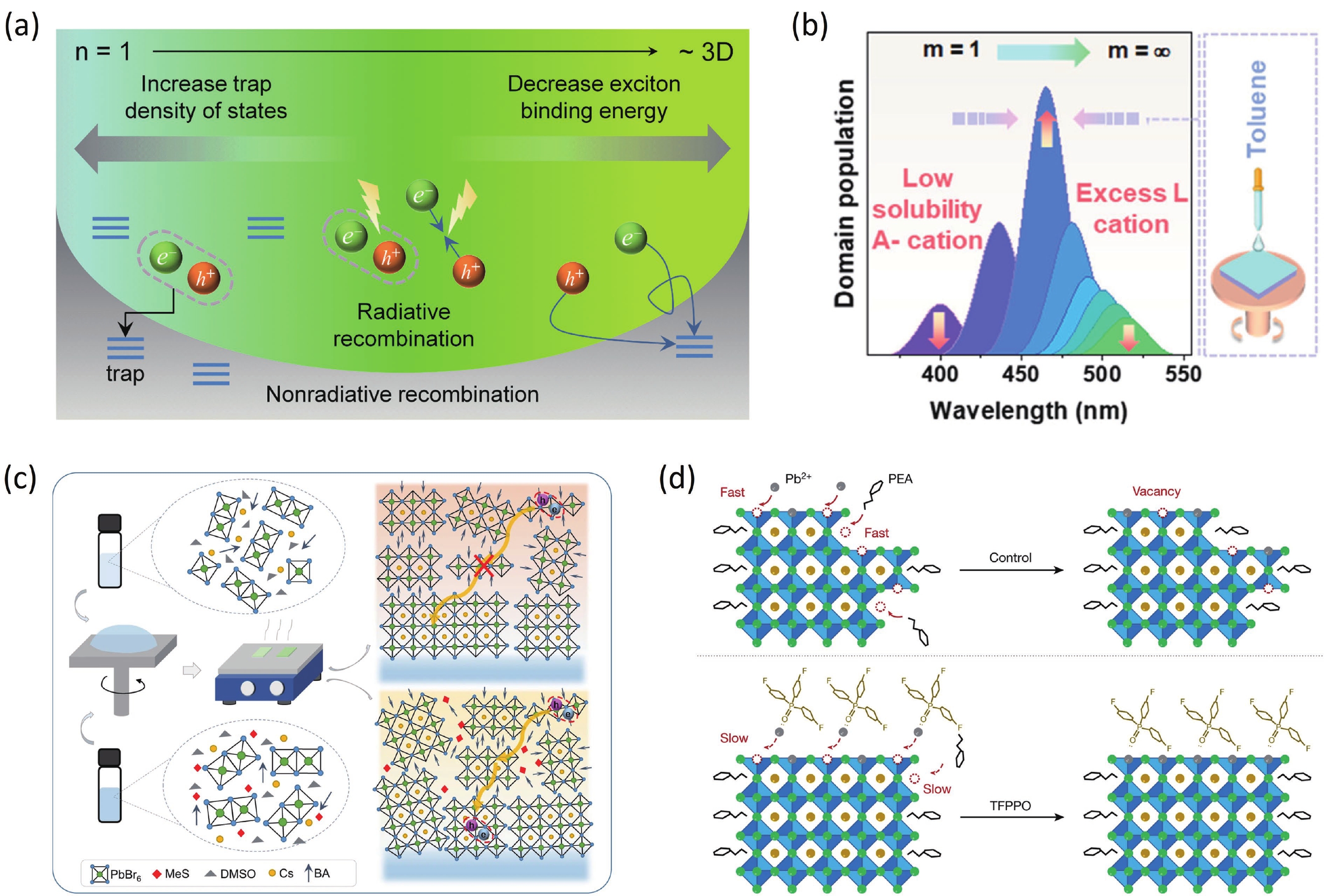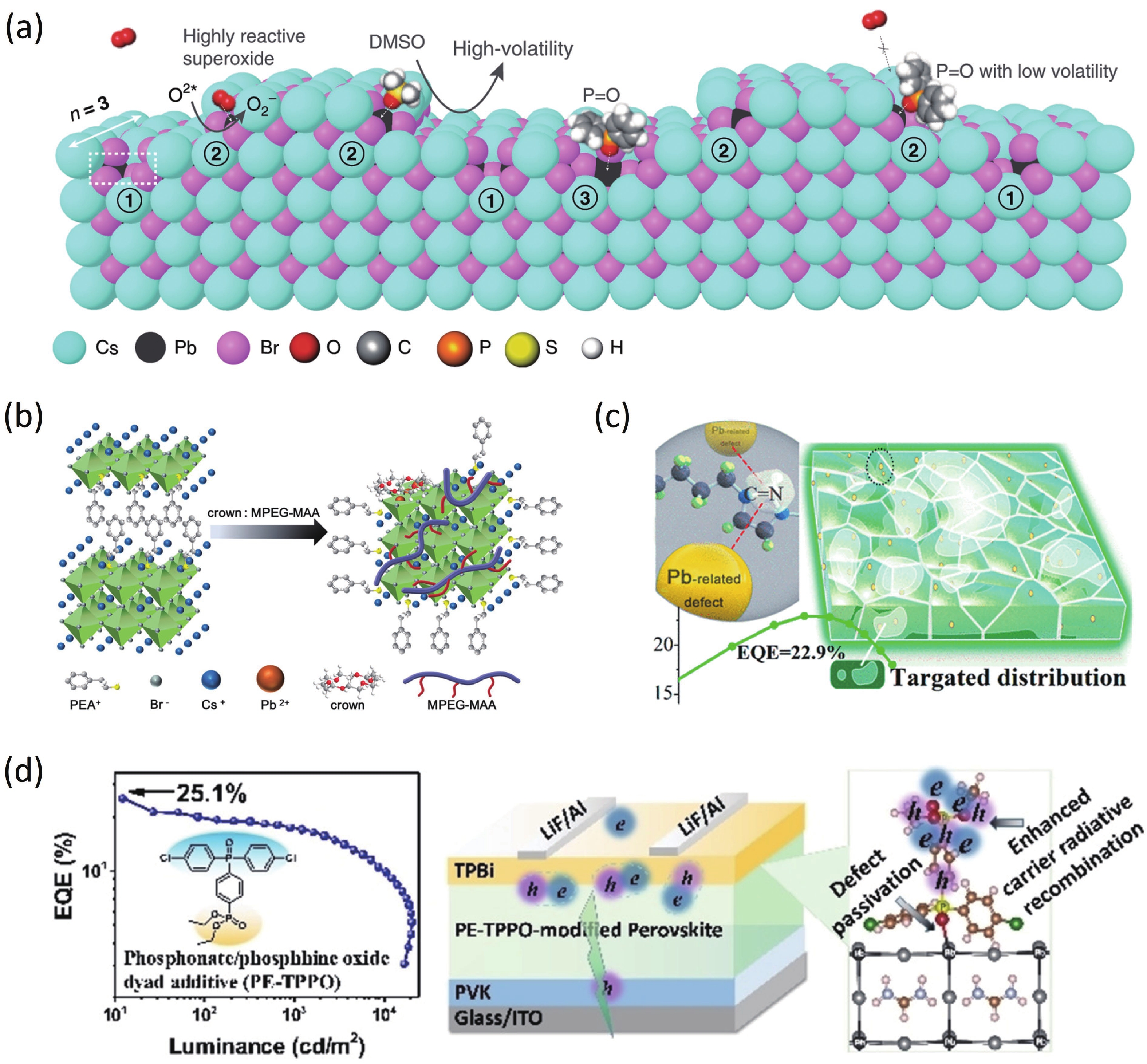| Citation: |
Dezhong Zhang, Chuanjiang Qin, Liming Ding. Domain controlling and defect passivation for efficient quasi-2D perovskite LEDs[J]. Journal of Semiconductors, 2022, 43(5): 050201. doi: 10.1088/1674-4926/43/5/050201
****
D Z Zhang, C J Qin, L M Ding. Domain controlling and defect passivation for efficient quasi-2D perovskite LEDs[J]. J. Semicond, 2022, 43(5): 050201. doi: 10.1088/1674-4926/43/5/050201
|
Domain controlling and defect passivation for efficient quasi-2D perovskite LEDs
DOI: 10.1088/1674-4926/43/5/050201
More Information
-
References
[1] Kim H S, Lee C R, Im J H, et al. Lead iodide perovskite sensitized all-solid-state submicron thin film mesoscopic solar cell with efficiency exceeding 9%. Sci Rep, 2012, 2, 591 doi: 10.1038/srep00591[2] Wang N, Cheng L, Ge R, et al. Perovskite light-emitting diodes based on solution-processed self-organized multiple quantum wells. Nat Photonics, 2016, 10, 699 doi: 10.1038/nphoton.2016.185[3] Cho H, Jeong S H, Park M H, et al. Overcoming the electroluminescence efficiency limitations of perovskite light-emitting diodes. Science, 2015, 350, 1222 doi: 10.1126/science.aad1818[4] Quan L N, Ma D, Zhao Y, et al. Edge stabilization in reduced-dimensional perovskites. Nat Commun, 2020, 11, 170 doi: 10.1038/s41467-019-13944-2[5] Jiang Y, Cui M, Li S, et al. Reducing the impact of Auger recombination in quasi-2D perovskite light-emitting diodes. Nat Commun, 2021, 12, 336 doi: 10.1038/s41467-020-20555-9[6] Chu Z, Ye Q, Zhao Y, et al. Perovskite light-emitting diodes with external quantum efficiency exceeding 22% via small-molecule passivation. Adv Mater, 2021, 33, 2007169 doi: 10.1002/adma.202007169[7] Qin C, Matsushima T, Potscavage W J, et al. Triplet management for efficient perovskite light-emitting diodes. Nat Photonics, 2020, 14, 70 doi: 10.1038/s41566-019-0545-9[8] Yuan M, Quan L N, Comin R, et al. Perovskite energy funnels for efficient light-emitting diodes. Nat Nanotechnol, 2016, 11, 872 doi: 10.1038/nnano.2016.110[9] Qin C, Sandanayaka A S D, Zhao C, et al. Stable room-temperature continuous-wave lasing in quasi-2D perovskite films. Nature, 2020, 585, 53 doi: 10.1038/s41586-020-2621-1[10] Ma D, Lin K, Dong Y, et al. Distribution control enables efficient reduced-dimensional perovskite LEDs. Nature, 2021, 599, 594 doi: 10.1038/s41586-021-03997-z[11] Fang Z, Chen W, Shi Y, et al. Dual passivation of perovskite defects for light-emitting diodes with external quantum efficiency exceeding 20%. Adv Funct Mater, 2020, 30, 1909754 doi: 10.1002/adfm.201909754[12] Chu Z, Zhao Y, Ma F, et al. Large cation ethylammonium incorporated perovskite for efficient and spectra stable blue light-emitting diodes. Nat Commun, 2020, 11, 4165 doi: 10.1038/s41467-020-17943-6[13] Zhang D, Fu Y, Liu C, et al. Domain controlling by compound additive toward highly efficient quasi-2D perovskite light-emitting diodes. Adv Funct Mater, 2021, 31, 2103890 doi: 10.1002/adfm.202103890[14] Yantara N, Jamaludin N F, Febriansyah B, et al. Designing the perovskite structural landscape for efficient blue emission. ACS Energy Lett, 2020, 5, 1593 doi: 10.1021/acsenergylett.0c00559[15] Kong L, Zhang X, Li Y, et al. Smoothing the energy transfer pathway in quasi-2D perovskite films using methanesulfonate leads to highly efficient light-emitting devices. Nat Commun, 2021, 12, 1246 doi: 10.1038/s41467-021-21522-8[16] Akkerman Q A, Rainò G, Kovalenko M V, et al. Genesis, challenges and opportunities for colloidal lead halide perovskite nanocrystals. Nat Mater, 2018, 17, 394 doi: 10.1038/s41563-018-0018-4[17] Ye J, Byranvand M M, Martínez C O, et al. Defect passivation in lead-halide perovskite nanocrystals and thin films: toward efficient LEDs and solar cells. Angew Chem Int Ed, 2021, 133, 21804 doi: 10.1002/ange.202102360[18] Liu Z, Qiu W, Peng X, et al. Perovskite light-emitting diodes with EQE exceeding 28% through a synergetic dual-additive strategy for defect passivation and nanostructure regulation. Adv Mater, 2021, 33, 2103268 doi: 10.1002/adma.202103268[19] Peng X, Yang X, Liu D, et al. Targeted distribution of passivator for polycrystalline perovskite light-emitting diodes with high efficiency. ACS Energy Lett, 2021, 6, 4187 doi: 10.1021/acsenergylett.1c01753[20] Zhao C, Wu W, Zhan H, et al. Phosphonate/phosphine oxide dyad additive for efficient perovskite light-emitting diodes. Angew Chem Int Ed, 2022, e202117374 doi: 10.1002/anie.202117374 -
Proportional views






 DownLoad:
DownLoad:















